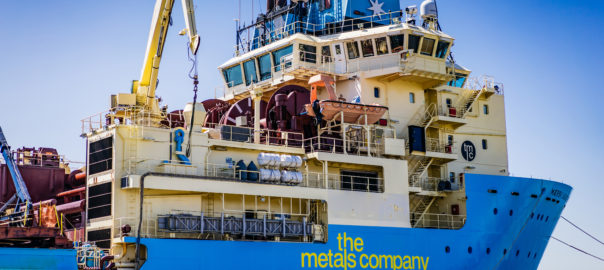The Metals Company, an explorer of “lower-impact battery metals from seafloor polymetallic nodules”, has mobilised its latest offshore research campaign, Environmental Expedition 5C, which continues its investigation of the pelagic zone in its NORI-D licence area of the Clarion Clipperton Zone in the Pacific Ocean.
The company’s fourth environmental campaign this year, Expedition 5C is the latest work package in The Metals Company’s multi-year deep-sea research program intended to establish a rigorous environmental baseline and characterise the potential impacts of its proposed nodule collection operations to source critical battery metals from deep-sea polymetallic nodules, the company says.
Setting sail this week aboard the exploration vessel the Maersk Launcher, researchers from the University of Hawaiʻi at Mānoa, University of Maryland, Texas A&M and the Japan Agency for Marine-Earth Science and Technology will conduct numerous studies over the six-week expedition to further characterise the biological species and food web structure from the ocean surface to the benthic boundary layer, just above the abyssal seafloor at depths of up to 4,500 m. In addition, researchers will continue examining the chemistry, trace metal and nutrient profiles found throughout the water column.
At the researchers’ disposal will be specialised equipment including hydrographic rosettes to collect water samples, a Saildrone autonomous vehicle and MOCNESS nets, which will be used to sample micronekton and zooplankton communities throughout the water column.
“The collection and analysis of this baseline data is a critical component of the Environmental, Social and Impact Assessment (ESIA) required to establish the state of the ecosystem as it exists prior to the commencement of nodule collection and to assist in predicting the potential effects on the surrounding environment,” Dr Michael Clarke, TMC’s Environmental Program Manager, says. “The team of researchers on this expedition are at the top of their fields and the research they produce will contribute greatly to advance society’s knowledge of the Clarion Clipperton Zone.”
TMC’s NORI-D nodule project is the first in the company’s project development pipeline. In January, The Metals Company published an upward revision to the nodule resource reported within the NORI-D area held by its subsidiary, Nauru Ocean Resources Inc (NORI), improving resource confidence from inferred to indicated status. Resource tonnage increased by 7% over the reported area from 320 Mt inferred to 341 Mt indicated. The positive conversion rates arising from infill sampling grid with quality box core sample data are high compared to the typical outcomes from infill sampling of terrestrial mineral deposits.








